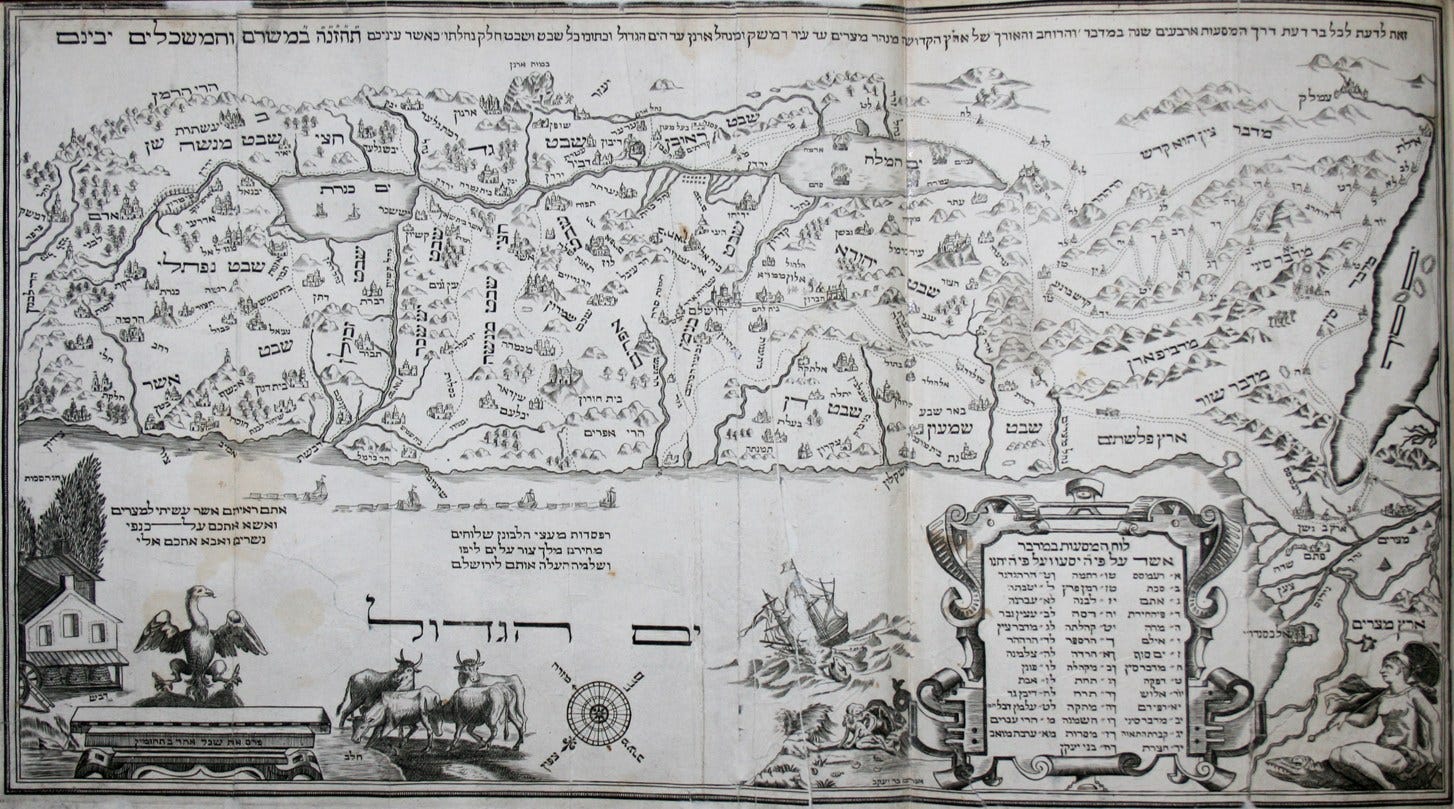The Jewish State At War
Wartime reflections by a former Israeli senior intel officer and 2023 Caledonia fellow
Hamas’s barbarous attack on Israel has been described as many things, but first and foremost it was an attack on the Jewish state and the Jewish people. In light of this, three reflections are offered below on Jewish history, Jewish strategy, and Jewish leadership in this moment.
The Echoes Of Jewish History
October 7 stands as a dark new chapter in Jewish history. The morning began with a barrage of rockets, and was followed by 2,500 terrorists infiltrating the border to torture, rape, mutilate, and ultimately murder 1,400 people, kidnap another 240 civilians, wound thousands, and devastate a score of communities.
A raid in Russia, Wojciech Kossak, 1907. Wikimedia.
This attack is a reminder of the severe threats the Jewish state has faced since its establishment in 1948. For many Jews, however, the attack touches an even deeper historical nerve, dredging up more profound, haunting memories from Jewish history.
The harrowing scenes of babies kidnapped from their cribs and parents murdered as they tried to protect their children are eerily reminiscent of the Holocaust; the utter devastation of peaceful communities harkens back to some of the worst pogroms that once plagued Eastern Europe.
Israel’s national poet, Hayim Nahman Bialik, reflected this history in his Hebrew poem, "In the City of Slaughter." The poem was penned after the 1903 Kishinev pogrom, in which a mob attacked a community of 55,000 Jews in a sleepy city on the southwestern border of the Russian Empire. In the end, 49 Jews were killed and 500 injured, hundreds of Jewish women were raped, and 1,500 Jewish homes were devastated. Bialik writes:
"Get up and walk through the city of the massacre,
And with your hand touch and lock your eyes
On the cooled brain and clots of blood
Dried on tree trunks, rocks, and fences; it is they.
Go to the ruins, to the gaping breaches,
To walls and hearths, shattered as though by thunder."
It is chilling to realize a poem written over a century ago could have been written just this month. This tragic day is bound to become another symbolic chapter in a long list of Jewish days of collective mourning in the face of centuries of anti-Semitism.
Jews Praying in the Synagogue on Yom Kippur, Maurycy Gottlieb, 1878. Tel Aviv Museum of Art/Wikimedia.
While the immediate sorrow is yet strong, the repercussions of the Hamas attack on Israeli society, defense thinking, and political discourse is bound to be far-reaching. During Kishinev, the Jewish community was defenseless. Today, Hamas attacked a modern sovereign state, and one of the world’s formidable military powers.
This crime forces Israelis to once again confront an unsettling question: how does a free society combat an Islamic fundamentalist terrorism ideology that glorifies death over life? Israel has had to grapple with this question many times since its founding.
Of course the other historical significance of October 7 is how one of the world’s best intelligence establishments failed to warn of a well-planned attack likely authorized by Iran. Historians and strategic experts will undoubtedly dissect the thought processes of Israeli intelligence analysts preceding this catastrophe. They'll seek to demystify why Israel may have underestimated Hamas's core motivations, possibly misconstruing its immediate interests for its deep-rooted ideological motives.
Following Israel’s intelligence failure of the Yom Kippur War in 1973, the Israeli defense establishment implemented sweeping intelligence reforms, including the introduction of a "devil’s advocate unit" tasked with challenging majority intelligence assessment provided to the military leadership to avoid dogma and groupthink. We should expect to see similar changes in the Jewish state’s intelligence processes, organizations, and capabilities following the most recent intelligence debacle.
A Call for Jewish Strategy
This is also a critical moment for Jewish strategy. Israel’s leadership faces a daunting task. Gen. David Petraeus, commander of American forces in Iraq and Afghanistan, warned it could quickly become "Mogadishu on steroids," adding “it’s hard for me to imagine a more difficult setting than this particular one.”
King David Playing the Harp, Gerard van Honthorst, 1622. Cantraal Museum/Wikimedia.
The Gaza Strip is twice the size of Washington, D.C., and with 2.2 million inhabitants is among the world’s most densely populated areas. Hamas terrorists do not wear uniforms, and they hide among civilians in schools, hospitals and mosques. According to the IDF, Hamas’s command center is placed underneath the largest medical complex in the Gaza Strip, Al-Shifa Hospital.
In recent years, Hamas has been channeling billions of dollars of international aid money into digging a 310-mile network of tunnels and bunkers underneath Gaza. As the IDF’s invasion commences, Israeli soldiers will need to fight in urban territory, clearing house after house while avoiding booby traps, suicide bombers, and drone strikes. All this, while trying to release the hostages assumed to be hidden inside the tunnels.
As the Israeli command tries to navigate a Gaza campaign while minimizing civilian casualties, it will need to monitor a potential second front with Iranian proxy Hezbollah in the north, a third front with Palestinian terror groups in Judea and Samaria (the West Bank), a fourth front with Iranian militias in Syria, and a fifth front with Iran itself. Israeli Prime Minister Benjamin Netanyahu went as far as calling it Israel’s “second independence war.”
While the war is expected to take months, it’s not yet clear what would come after Israel eradicates Hamas’s military capabilities and returns the hostages. Neither of the options on the table of the Israeli command seems especially attractive.
One option is for the IDF to take over Gaza to ensure Hamas does not reconstitute. Israel withdrew from Gaza in 2005, and there does not seem to be much appetite to take it back. Another option is to bring back the Palestinian Liberation Organization (PLO), which lost Gaza to Hamas in 2007, to rule the area. The PLO has myriad of problems from corruption to incompetence. It is also unclear that the Gazan people will want to be ruled by the PLO.
A Moment for Jewish Leadership
Beyond history and strategy, the October 7 attack was a moment of Jewish leadership. As the news about the massacre spread, Israeli society shifted from starkly politically divided (following months of protests over Israel’s judicial reform and the role of religion in the public sphere) to more unified than its been in decades. This was the finest hour of many civil society organizations, which immediately put political divides aside, formed war rooms, and mobilized people and resources to assist the massacre survivors, soldiers, and displaced communities.
A 1695 copy of a map of Israel by Abraham Bar-Jacob, Amsterdam. Wikimedia.
October 7 also saw the rise of unlikely leaders who exemplified grace under pressure. One brave Israeli woman, Rachel Edri, demonstrated quick-witted survival instincts when she was taken hostage by Hamas terrorists in her home in the southern city of Ofakim. Understanding that she needed to buy time for IDF soldiers rescue her, Rachel served the terrorists canned pineapple, tea, and her signature Moroccan cookies while chatting with them. IDF soldiers eventually broke into her house after 17 hours and killed the terrorists. Rachel quickly became a folk hero with her face gracing public squares – a national symbol for Israeli resolve during this hard time.
And above all, there are the courageous policemen and soldiers that stormed into the 20 communities to fight the terrorists and rescue civilians. They fought heroic battles for hours with the terrorists as few against many, some of them until their very last bullet. Many of them paid the ultimate price. They are heroes and Israelis will honor their legacy for years to come.









Excellent update and perspective. Please continue to post during this incredibly difficult time.